29 F. high in the Twin Cities Friday.
26 F. average high on February 5.
19 F. high on February 5, 2015.
February 6, 1994: The national low is at Tower, dropping down to -41.
Weekend Thaw - "Post Traumatic Weather Disorder"Relatives
out east are frantic. "Are we going to get another Snowzilla?" After a
2-3 foot blizzard they're all paranoid. And just because you're paranoid
doesn't mean they're not out to get you.
Back in 1998 my wife and
kids were driving to the dentist, when they got caught in a massive
hailstorm. My wife handled it well, gripping the steering wheel, yelling
"We're going to die!" For months after that scare my boys would call me
every day. "Is there going to be severe weather? Is it going to be bad?
Do we have to drive with mom?"
Anyone who's been through a flood,
blizzard, tornado or hurricane describes an almost PTSD-like trauma,
complete with anxiety, depression and sleepless nights. You never watch a
weather report quite the same way. Suddenly it's personal.
Then
again most TV meteorologists were traumatized by the weather at a tender
age, incentive to learn more about meteorology and try to reconcile
what happened to them. For me it was a tropical storm (Agnes, in 1972).
Who knows how many careers exceptionally bad weather has launched.
A welcome weekend thaw gives way to a couple inches of new powder
Sunday night and
Monday as much colder air drills southward. Blowing and drifting could make for rough travel outside the metro by early
Monday. Expect 1 or 2 subzero nights next week, but temperatures blip back up to average by next week.
Oh, how I long for "average weather".
Blizzard Watch Western Minnesota on Sunday.
The combination of a couple inches of new snow, plus strong winds
whipping up snow already on the ground may exceed blizzard criteria,
especially late afternoon Sunday into Sunday night, when winds could
exceed 50 mph.
Super-Sized Sunday Clipper.
NAM guidance still shows a couple inches of snow Sunday PM into Monday
AM; more over the Red River Valley and far western Minnesota, where this
could be a plowable snow event. The bigger concern is high winds
whipping up snow already on the ground, creating a potential for
blizzard conditions, especially Sunday night. 84-hour accumulated
snowfall: NOAA and AerisWeather.
Winds Peak Monday Morning.
Models still show sustained winds of 25-30 mph with higher gusts, which
will be more of a factor in open areas outside the metro area. Winds
ease by the middle of next week as colder air settles in. Graphic: Aeris
Enterprise.
Minor Canadian Occupation.
As is (always) the case the cold air comes in waves, like slowly
cresting swells on the beach. This beach faces due north, and the waves
of numbing air will be a poignant reminder that a low sun angle coupled
with long, snow-covered nights across Canada is still brewing up chilly
air. A couple inches of snow Sunday night heralds the arrival of cold
front #1; a colder cold front sparks a smear of snow Friday, coupled by a
better chance of negative numbers next weekend. Enjoy the thaw!
Colder Next Week - Nothing Too Forbidding.
It won't be as cold as 3 weeks ago, but temperatures may hold in single
digits and low teens by the middle of next week with a subzero wind
chill at times, one or two nights below zero next weekend, followed by a
slight rebound next week.
Moderately Cold.
This is a shift from previous trends in the 2-week GFS predicted winds
at 500 mb, suggesting a lingering Canadian flows for the northern tier
states, milder Pacific winds pushed south of Minnesota. We'll see if
this is a fluke or a real trend, but if this verifies we won't see any
extended thaws anytime soon.
Drought Update.
Mark Seeley takes a wider look at El Nino and the status of (historic)
drought in the western USA in this week's installment of
Minnesota WeatherTalk; here's an excerpt: "...
From
Brad Rippey at the USDA in his weekly USA drought briefing: Since
mid-October 2015, stormy weather in many parts of the country in part
driven by a strong El Niño has significantly reduced U.S. drought
coverage from 34.78 to 15.48%a drop of 19.30 percentage points. Where
drought remains, mostly in the Far West, there has been incremental
improvement. Although long-term concerns still include below-average
reservoir storage, groundwater shortages, and tree mortality, winter
precipitation has boosted spring and summer runoff prospects; improved
rangeland and pasture conditions; cut irrigation demands; and reduced
the need for supplemental feeding of livestock. California’s intrastate
reservoirs held just 54% of their normal water volume on December 31,
and that number may not appreciably improve until high-elevation snow
begins to melt in the spring..." (Graphic credit:
U.S. Drought Monitor).
A Healthy Snowfall Offers Variety of Environmental Benefits. Today's weather blurb was, in part, inspired by a 2011 post at
The University of Delaware that reminded me of the many advantages of a significant snowfall: "...
This
blanket effect makes snow an excellent insulator for gardens and
landscapes, protecting these natural areas and their animal inhabitants
against frigid temperatures and damaging winds. Snow also lessens -- to
some extent -- the extremes of temperature fluctuation to which the soil
is subjected, says Hansen. This can be critical for some plants,
including evergreens. Even in mid-winter, if air temperature within the
canopy of these plants rises during the day, the plants will try to take
moisture from the soil. If the soil is frozen, the plants can actually
die of thirst. The extent to which snow insulates depends on its depth.
Generally, temperatures underneath a layer of snow increase about 2
degrees Fahrenheit for each inch of accumulation..."
January Hits New Record Low in Arctic. Here's an excerpt from
The National Snow and Ice Data Center: "
Arctic
sea ice extent during January averaged 13.53 million square kilometers
(5.2 million square miles), which is 1.04 million square kilometers
(402,000 square miles) below the 1981 to 2010 average. This was the
lowest January extent in the satellite record, 90,000 square kilometers
(35,000 million square miles) below the previous record January low that
occurred in 2011. This was largely driven by unusually low ice coverage
in the Barents Sea, Kara Sea, and the East Greenland Sea on the
Atlantic side, and below average conditions in the Bering Sea and Sea of
Okhotsk..."
USA TODAY has more perspective on the data
here.
 The Southwest May Have Entered a "Drier Climate State"
The Southwest May Have Entered a "Drier Climate State". Here's an excerpt from
Climate Central: "...
We see a very intense trend in the Southwest,” Andreas Prein, a postdoctoral researcher at the National Center for Atmospheric Research, said. “
The Southwest might already have drifted into a drier climate state.” Prein, who led the research published on Thursday in Geophysical Research Letters,
looked at weather patterns rather than average trends in precipitation.
The team identified 12 major patterns, only three of which are
favorable for rain in the Southwest. In
an ominous finding for the region, they found that over the past 30
years, those three rainy patterns are becoming less frequent and the
rains and mountain snow that come with them are drying up..."
Map credit above: "
Precipitation
across the U.S. that can be attributed to these changes in weather
patterns. The gray dots show areas where the results are statistically
significant." Credit: Andreas Prein.
GOES-R: A Weather Superhero With Lightning Vision.
I am really looking forward to GOES-R going online with up to 1 minute
satellite updates and a real-time lightning mapper; here's a preview of
capabilities from
Lockheed Martin: "
Sure
it's bright, loud and sometimes scary, but if you watch lightning from
space, you can learn a lot about storms. The GOES-R satellite has a new
instrument called the Geostationary Lightning Mapper that can take
hundreds of images every second of all types of lightning. Think of it
as a weather superhero with 'lightning vision.' When it sees an increase
of lightning flashes, it can help weather forecasters predict a severe
storm or tornado, and give us more warning to go to a safe place."
Security Cam Footage of EF-1 Tornado. This is the tornado that hit a high school in Crockett County, Mississippi. Here's more info and a link to
YouTube video, courtesy of Michael Maness: "
Raw
security camera footage from an EF-1 Tornado that hit Crockett County
High School on 2/2/2016. The EF-1 tornado’s path was reportedly 100
yards wide and spanned just more than two and a half miles, according to
an NWS release. The tornado’s maximum wind speed is estimated at 95
mph. The tornado formed about 4:55 p.m. around three miles west to
southwest of Alamo, according to the release. It is listed as having
ended at 5:03 p.m. about two miles west to northwest of Alamo."
Car Fumes Are Killing Us. So Why Isn't Anyone Telling Us Not To Drive? This study focuses on the UK, but the results and implications are more sweeping; here's an excerpt at
The Guardian: "...
Because air pollution – in the memorable phrase of Prof Chris Griffiths, who shared the preliminary findings of a study with Channel 4’s The Great Car Con last week – causes children growing up in polluted areas (of which my London borough is one) to develop “smaller, stunted lungs”. It also causes people to die from heart attacks, strokes and lung cancer, and exacerbates other lung diseases and asthma. Usually it’s not the only cause, but air pollution is a factor in at least 30,000 deaths each year in the UK, although scientists are struggling to disentangle the damage
caused by nitrogen dioxide from that caused by particulates, or soot.
By way of comparison, in the UK there are up to 100,000 smoking-related
deaths each year, nearly 9,000 alcohol-related ones and about 1,800
people killed in car crashes..."
Koch Network Frustrated by Trump. Here's an excerpt from
Bloomberg Politics: "...
Although
historically the Koch network has supported mostly Republican
candidates, Koch is sharply critical of both parties for what he views
as out-of-control spending and corporate welfare. Sometimes he sounds
like a liberal. Of Bernie Sanders' crusade against the power of
corporations, he said, “a lot of what he says is true. The
businesspeople who are successful haven’t become successful because they
helped others improve their lives. It's because they helped rig the
system...”
Fracking the Everglades? Many Floridians Recoil as House Approves Bill.
InsideClimate News has the story - here's a clip: "
South Florida, home to one of the country's most fragile water systems, could be the nation's next fracking frontier. The Florida House of Representatives voted 73-45 on Jan. 27 to approve a bill that opens the door to fracking by 2017
after the state studies the environmental and public health risks.
Next, the bill requires state regulators to draft rules governing the
practice, which could begin in 2018 or 2019...." (File image: NASA).
Sustainable Energy in America. Here's an excerpt from an online resource provided by the
Business Council for Sustainable Energy: "
The
2016 edition of the Sustainable Energy in America Factbook – produced
for the Business Council for Sustainable Energy by Bloomberg New Energy
Finance, provides up-to-date, accurate market information about the
broad range of industries — energy efficiency, renewable energy and
natural gas — that are contributing to the country’s move towards
cleaner energy production and more efficient energy usage..."
One Statistic Shows Just How Rapidly Our Energy System is Changing. Here's an excerpt from
The Washington Post: "...
Because natural gas only emits about half as much carbon dioxide when
burned in comparison to coal, a shift like this has major implications
for the U.S.’s overall pollution profile. Sure enough, the Sustainable
Energy in America Factbook also finds that 2015’s greenhouse gas
emissions from the electricity sector were the lowest since 1995, at
1,985 million metric tons. That number was also an impressive 4.3
percent lower than levels just a year earlier, in 2014..."
Graphic credit above:
Bloomberg New Energy Finance/Business Council for Sustainable Energy.
The Developing World Can Leapfrog Dirty Coal And Go Straight To Clean Energy.
Just like many Soviet-block countries bypassed landlines and went right
to cellular technology, the same thing is happening with energy. Here's
a snippet from a story at
Fast Company: "...
The
rapidly unfolding energy transition is bypassing coal and going
straight to low-cost renewables. As countries in Africa, Asia, and Latin
America seize this chance to "leapfrog" over fossil fuels and expand
their clean energy capacity, they not only benefit from economic growth
and cheap electricity, they also increase their security and avoid the
severe damage to health and the environment that burning fossil fuels
causes..."
Sodium Battery Contains Solution to Water Desalination.
Gizmag has news of the promising developments; here's an excerpt: "...
The
researchers carried out modeling to investigate how their device might
perform with salt concentrations on par with seawater. They claim it
could recover around 80 percent of desalinated water, though this does
not take into consideration other water contaminants. They are now
working towards using real seawater in the device to see how it performs..."
Photo credit above: "
Illinois
mechanical science and engineers found they could desalinate salt water
more efficiently than traditional methods relying on reverse osmosis." (Credit: L. Brian Stauffer).
What to Expect When You're Expecting the Collapse of Society As We Know It. Here's an excerpt of a harrowing and mildly disturbing article at
BuzzFeed: "...
There
are tutorial blog posts on water purification, videos declaring “a
vague sense of uneasiness is reason enough to prepare,” and five
different Survival Mom Facebook groups
totaling more than 150,000 members. “Preparedness runs the gamut from
practical things all the way to the real, extreme, worst-case
scenarios,” Bedford says. “The stuff that isn’t even that unthinkable
anymore.” Stuff like a massive electromagnetic pulse. Or an earthquake,
or a tidal wave, or a complete unraveling of the fabric of society —
stuff that would make for a second Great Depression. Not the end of the
world, then, so much as the end of a relatively pleasant and convenient
one..."
Now You Can Summon A Tesla Using Your Apple Watch. Here's a link to a story and video at
Quartz: "...
Wong created the Remote S for Tesla app under the Rego Apps brand, and is credited with earlier combining Tesla functionality with Siri,
the voice-activated assistant found on iOS devices. According to Wong,
when using Summon via the Apple Watch, Tesla owners will no longer need
to have their key fob within 39 feet (12 meters) of the car..."
You Won't Be Happiest Until You Turn 65 Years Old. Well that gives me something to live for - here's an excerpt from
Quartz: "
Will
you ever be happy? The answer, it seems, is yes. Likely when you’re a
bit older. A recent government survey asked people in the UK to rate out
of 10 how satisfied they were with life, as well as how anxious and
happy they’d felt. The results showed that people aged 65-79 had the
highest levels of life satisfaction and happiness, and the lowest levels
of anxiety. But things appeared less rosy for those aged 45-59, who
reported the lowest levels of life satisfaction..."
The Injuries Most Likely To Land You In An Emergency Room. Here's an excerpt from
Quartz: "
What
you’re looking at are 367,492 visits to US emergency rooms in 2014,
distributed by age. The data give us some insight into how people injure
themselves at different points in their lives..."
Healthy Fast Food? McDonald's Kale Salad Has More Calories Than a Double Big Mac. Say it isn't so. Here's an excerpt from
CBC News: "
In
a quest to reinvent its image, McDonald's is on a health kick. But some
of its nutrient-enhanced meals are actually comparable to junk food,
say some health experts. One of new kale salads has more calories,
fat and sodium than a Double Big Mac. Kale, a leafy green vegetable
chock-full of vitamins, has become a trendy superfood. In Canada, the
global fast food chain recently tossed the green into a breakfast wrap and a line of salads..."
Photo credit above: "
When
you add the accompanying dressing to the crispy chicken Caesar salad
with kale, it has more calories, salt, and fat than a Double Big Mac."
Friday Was National Weather Person's Day.
Did you give a weather nerd a hug yesterday? No? It's not too late.
Here's an excerpt about one of the original weather nerds, John
Jeffries, from
NOAA: "
February
5th is National Weatherperson's Day, commemorating the birth of John
Jeffries in 1744. Jeffries, a Boston physician and one of America's
first weather observers, began taking daily weather observations in
Boston in 1774. He took the first balloon weather observation over
London in 1784. He carried a thermometer, a barometer, and a hygrometer
to the height of 9000 feet..."
TODAY: Mostly cloudy, quiet. Winds: SW 10-15. High: 33
SATURDAY NIGHT: Gray, patchy fog - milder than average. Low: 28
SUNDAY:
Blizzard Watch western Minnesota. Overcast, mild start. Snow arrives
late, 1-2" Sunday night with drifting. Winds: NW 15-25. High: 33
MONDAY: Slow, slippery AM commute? Gusty, colder with drifting snow. Winds: NW 15-30. Wake-up: 15. High: 18
TUESDAY: Peeks of sun, feels like zero. Winds: NW 10-15. Wake-up: 5. High: 15
WEDNESDAY: Fading sun, a bit nippy. Winds: NW 5-10. Wake-up: -3. High: 11
THURSDAY: More clouds than sun, still chilly. Winds: SE 7-12. Wake-up: 2. High: 17
FRIDAY: Period of light snow possible. Winds: NE 10-15. Wake-up: 6. High: 23
Climate Stories...
Climate Change Implicated in a Specific Extreme Weather Event. Severe
weather attribution is emerging science, but the link between warmer
air/oceans and an increase in flooding events is increasing. Here's an
excerpt from
National Geographic: "...
In an article
published in Nature Climate Change, the team said that their climate
model simulations showed that anthropogenic warming not only increased
the amount of moisture the atmosphere can hold but also caused a small
but significant increase in the number of January days with westerly
flow, both of which increased extreme precipitation. The authors
explained that climate change “amplified” the violent storms that led to the area’s wettest January in more than a century and that it has likely increased
the number of properties at risk and raised the costs of a flooding
event. Based on more than 130,000 simulations of what the weather would
have been like with and without human influence on the climate, the
study finds that man-made greenhouse gas emissions have raised the
possibility of extreme flooding by 43 percent..."
Did ExxonMobile Lie to Investors About Climate Change? Here's an excerpt from an article at
The Nation: "...
Telling
the truth is not only crucial; it’s the law. American firms must
regularly disclose to investors and the public all material risks that
could affect corporate operations and profitability. That will be a
challenging if not self-defeating exercise for fossil-fuel companies in
the post-Paris era. Telling the truth about Paris only figures to
further spook already-nervous investors. “There’s now a very clear
message that fossil-fuel use must be quickly and dramatically reduced,”
said an official involved with Schneiderman’s investigation. “Companies
must acknowledge that. If they disagree, they need to state why and
explain in clear, practical terms what the implementation of the Paris
Agreement means for their business and its future...”
Deniers Sweating Over Senate Shaming. Here's a clip from
The Daily Kos: "...
Senators
Sheldon Whitehouse (D-RI), Ed Markey (D-MA) and Brian Schatz (D-HI)
have introduced an amendment to the energy bill that scolds merchants
of doubt and the companies that fund them. The amendment wouldn't
actually do anything. It's a "sense of the Senate," which means the
amendment just serves to express an opinion to get Congress on record as
supporting or opposing an issue. The amendment calls out the tobacco,
lead and fossil fuel companies for knowing the peer-reviewed science of
their products and employing "a sophisticated and deceitful campaign
that included funding think thanks to deny, counter, and obstruct (the
science)...to mislead the public and cast doubt in order to protect
their financial interest..."
File image: Shutterstock.
Glaciologists Anticipate Massive Ice Shelf Collapse. Other than that things are going quite well in Antarctica. Here's an excerpt from
University of Alaska Fairbanks: "
A team
of researchers is traveling to a rocky outcrop in Antarctica to study a
massive ice shelf that could crash down around them before the end of
March. University of Alaska Fairbanks glaciologist Erin Pettit said that
an ice shelf about 1,000 feet thick and a third the size of Rhode
Island is on the verge of shattering into millions of icebergs during
February or March, the end of Antarctica’s summer. If it does, the lead
researcher and her team will be within viewing distance in a place they
hope doesn’t live up to its name — Cape Disappointment..."
Image credit above: Ted Scambos. "A
Landsat image from Jan. 6, 2016, shows summer conditions of the fast
ice, glaciers and ice shelf in the Scar Inlet region of Antarctica."

El Nino and Global Warming - What's the Connection? Phys.org has a story that attempts to connect the dots; here's an excerpt: "...
The
science here isas yet inconclusive. One 2014 study suggests that super
El Nino events could double in the future due to climate change. Using
20 climate models to examine possible changes in El Nino over the next
100 years, the scientists projected that extreme El Nino events could
occur roughly every 10 years instead of every 20..."
Image credit above: "A visualization of El Nino". Credit: NOAA/Stuart Rankin.
The science here is as yet inconclusive. One
2014 study suggests
that super El Niño events could double in the future due to climate
change. Using 20 climate models to examine possible changes in El Niño
over the next 100 years, the scientists projected that extreme El Niño
events could occur roughly every 10 years instead of every 20.
Lisa
Goddard, director of the International Research Institute for Climate
and Society, finds the study interesting, but questions its conclusions
because observational evidence of El Niño only goes back a few decades,
whereas scientists know that there is a great deal of natural variation
in El Niño events over long periods of time. Moreover, said Goddard,
"The models have limitations in their representation of El Niño and its
variability."
Read more at:
http://phys.org/news/2016-02-el-nino-global-warmingwhat.html#jCp
The science here is as yet inconclusive. One
2014 study suggests
that super El Niño events could double in the future due to climate
change. Using 20 climate models to examine possible changes in El Niño
over the next 100 years, the scientists projected that extreme El Niño
events could occur roughly every 10 years instead of every 20.
Lisa
Goddard, director of the International Research Institute for Climate
and Society, finds the study interesting, but questions its conclusions
because observational evidence of El Niño only goes back a few decades,
whereas scientists know that there is a great deal of natural variation
in El Niño events over long periods of time. Moreover, said Goddard,
"The models have limitations in their representation of El Niño and its
variability."
Read more at:
http://phys.org/news/2016-02-el-nino-global-warmingwhat.html#jCp

Is Global Warming Behind D.C's New Era of Great Snowstorms? 7
of the 10 biggest snowfalls in Washington D.C. since 1889 have taken
place since 1979. Jason Samenow has a fascinating post at The
Capital Weather Gang; here's an excerpt that got my attention: "...
As
Capital Weather Gang’s Ian Livingston put it: “It seems the tempo of
big storms for the city has increased.” The flurry of recent blizzards
is even more impressive farther north:
Will Climate Change Move Agriculture Indoors? And Is That a Good Thing? Here's a snippet of an interesting story at
Grist: "..
.It’s
this indoor farming future that Allison Kopf, founder and CEO of the
agricultural technology startup Agrilyst, is curious about. In an indoor
farm, water doesn’t inconveniently evaporate. LED lights can lengthen
the hours of sunlight so plants can grow faster. CO2 levels can be
tweaked. Even as the weather outside goes haywire, plants farmed indoors
can live out an optimized version of the weather that they coevolved
with — the weather of the past. The best weather of the past. Or, as
Kopf calls it, a “weather-independent environment.” Kopf’s journey to
greenhouse tech was an unexpected one..." (Photo credit: Horticulture Group).




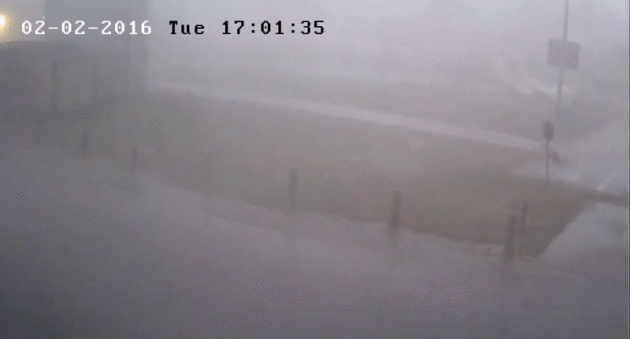


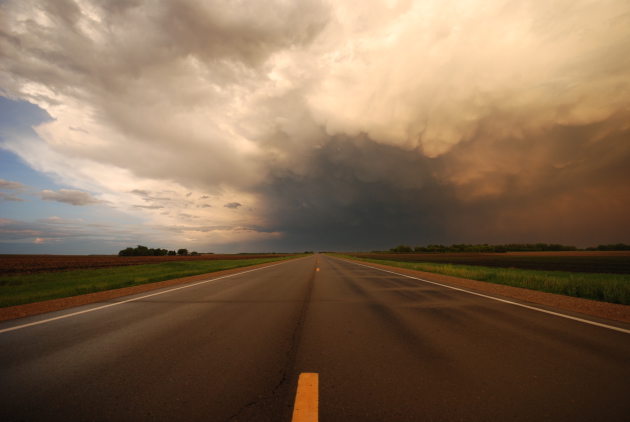

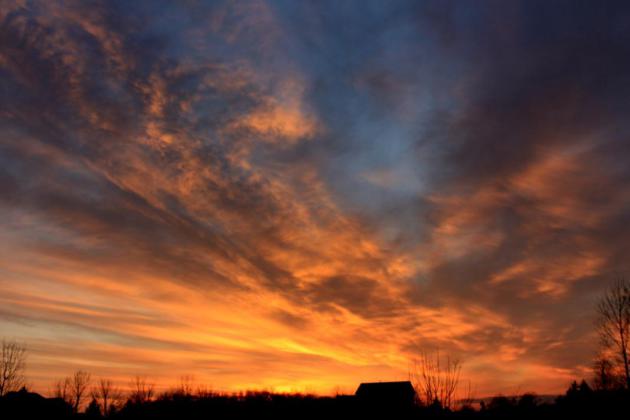
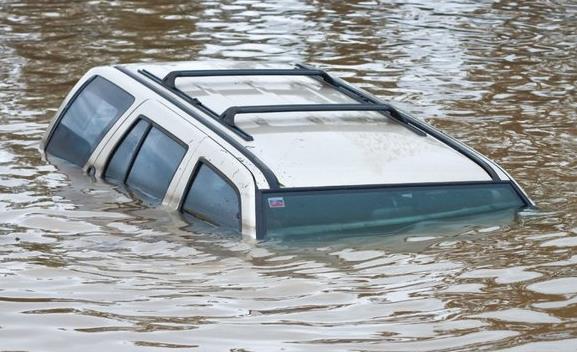
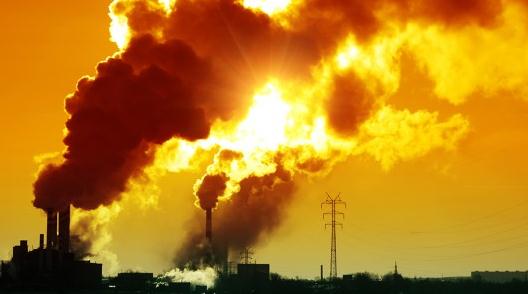
No comments:
Post a Comment